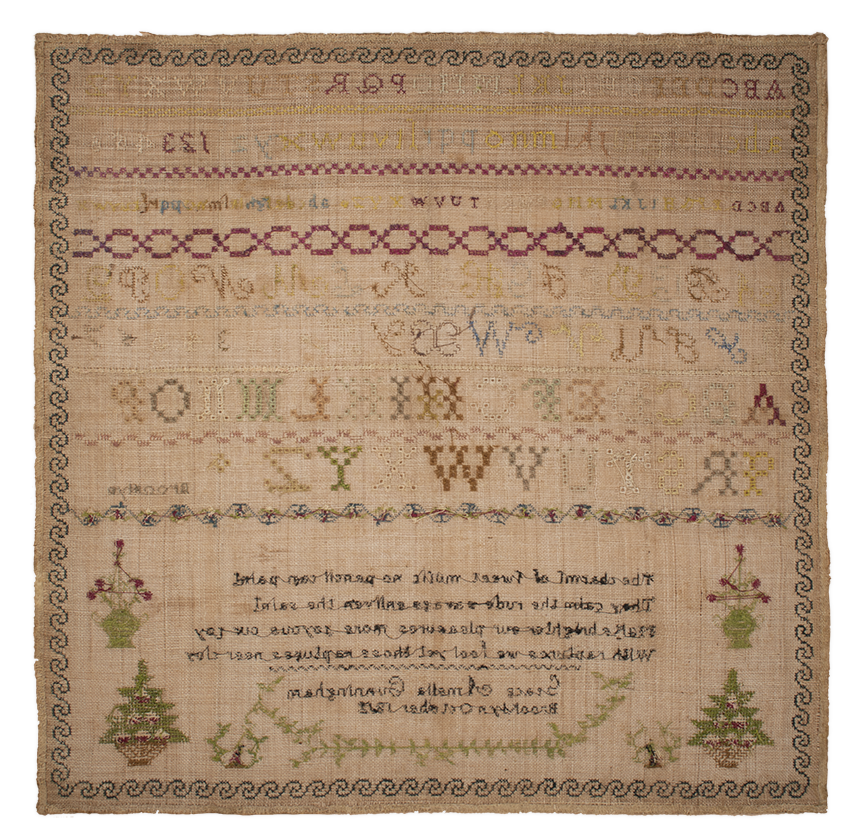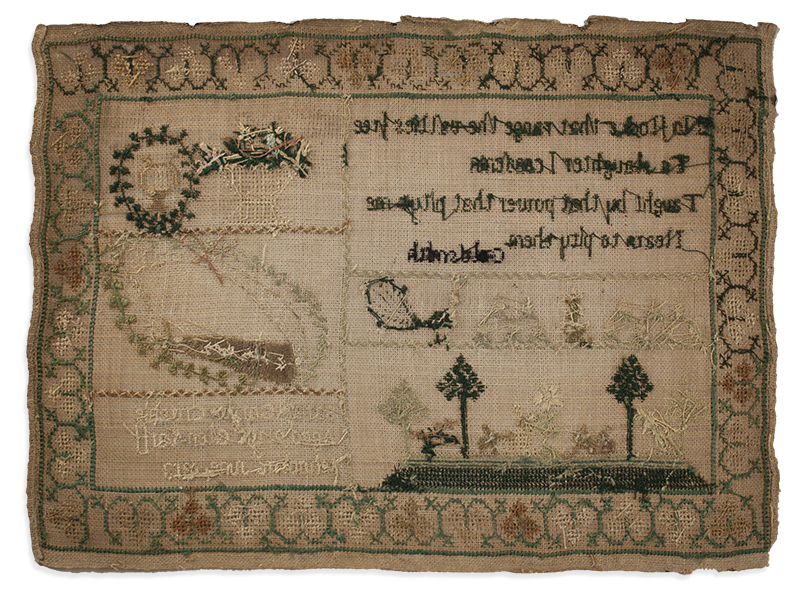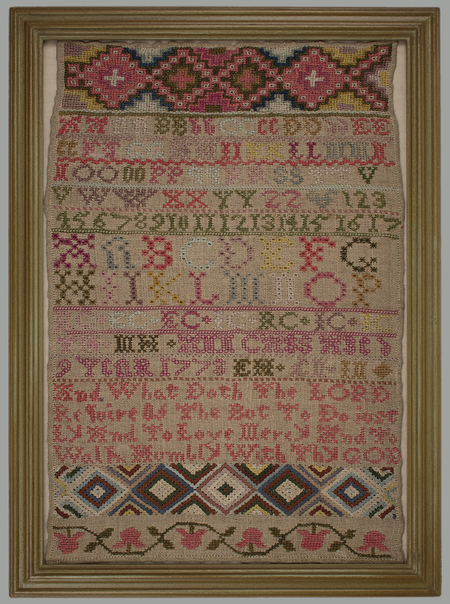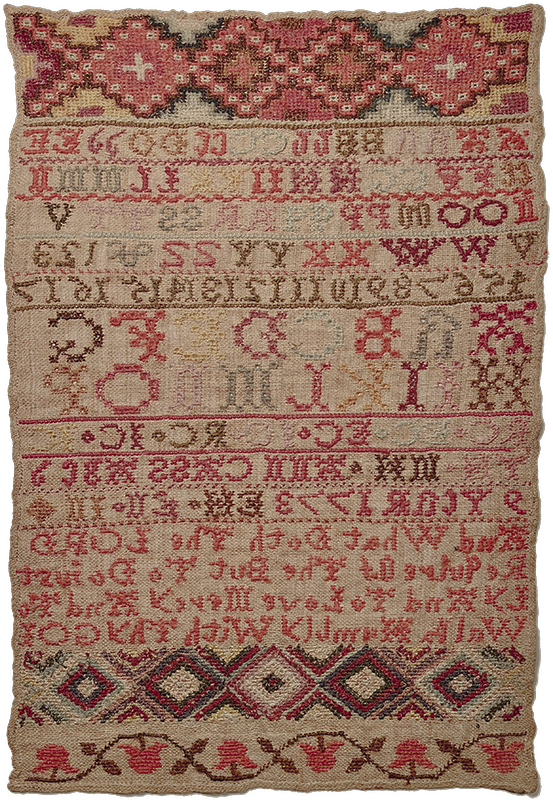A number of Pennsylvania samplers made in the first four decades of the 19th century feature a certain appealing composition - a house in three-quarter view with a fence and a sloping lawn and a willow tree. We often see a little black dog in front of the house and blue birds in the sky. This excellent sampler, a worthy new discovery and addition to this group, was made by Catharine Binkly Deal who was born in Chambersburg, located 55 miles southwest of Harrisburg, in Franklin County, in 1827.
Catharine was born in 1827, the daughter of Francis and Catharine (Minnich) Deal. The 1840 census shows the family in Chambersburg and the 1850 census indicates that Francis worked as a coach trimmer of railroad equipment. The early history of the Deal family is published in a book, Genealogical Account of the Ancestors in America of Joseph Andrew Kelly Campbell and Eliza Edith Deal, privately printed by Joseph Andrew Campbell, 1921.
“After the settlement of Pennsylvania by the Quakers, William Penn made known to the world that anyone settling there could worship God according to the dictates of conscience without interference or molestation. This news almost immediately started emigration to the new country. Among the earliest of the German emigrants to arrive was one John Diel, as the name was then spelled, who brought with him his wife and his son, Peter. They arrived in America in 1688, landing in Philadelphia, and made that city their future home. They settled in that portion of the city known as Nicetown, where the men engaged in farming. Peter Diel married in 1709, and had a son born in 1711, who was named Francis. In 1745 Francis Diel married Katrina Butz, born in 1721, and for a time resided with his parents. In 1762, Francis Diel purchased from William Shippen a piece of land situated at Nicetown Lane and Townshipline Road, now known as Hunting Park and Wissahickon Avenues. Here he built his home, which later was called the Abbey Inn. In 1771 he purchased another piece of ground from William Shippen and wife, and in 1773 bought an adjoining piece from Tench and Anne Francis, making his holdings about one and three-quarters acres. The Inn was situated at the corner of the property, and here he lived with his family until his untimely death. On October 17, 1777, shortly before the Battle of Germantown, while standing inoffensively in the doorway of his residence, Francis Diel was wantonly shot and killed by an unknown British soldier.” This Francis Diel was Catherine’s great-grandfather and his sons changed the spelling of the surname to Deal.
In 1848, Catharine married William Wark, who was born in Ireland and lived in Philadelphia where he worked as a watchmaker. The Book of American Clocks by Brooks Palmer (Macmillan Company, New York, 1964) lists William Wark in Philadelphia in 1848 and later. They remained in Philadelphia and had two children. Catharine died in 1905 and is buried at Mount Peace Cemetery in Philadelphia.
The sampler was worked in silk on linen and remains in excellent condition. While it would seem as if the house has faded over time, a photo taken of the reverse of the sampler prior to mounting indicates that it retains its original color. Conservation mounted and now in a beveled cherry frame.















